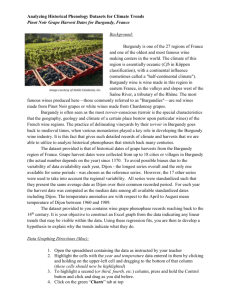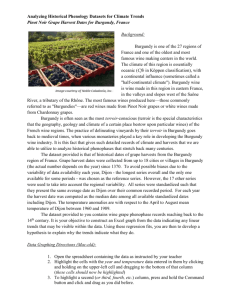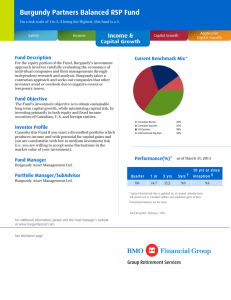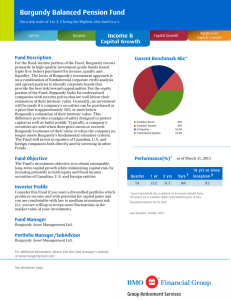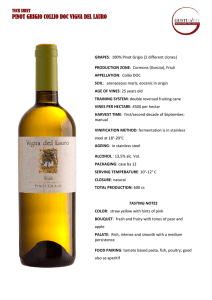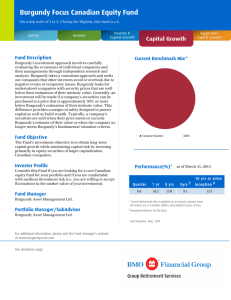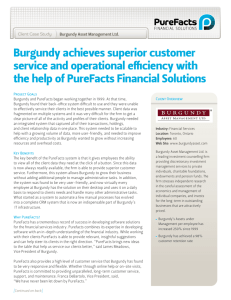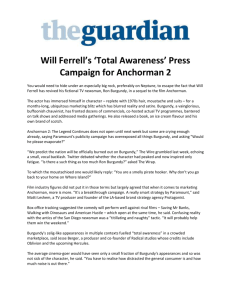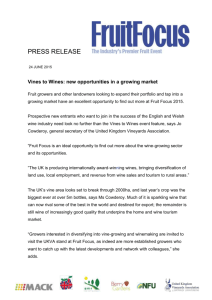The impact of World War 1 on the vineyards of Burgundy
advertisement
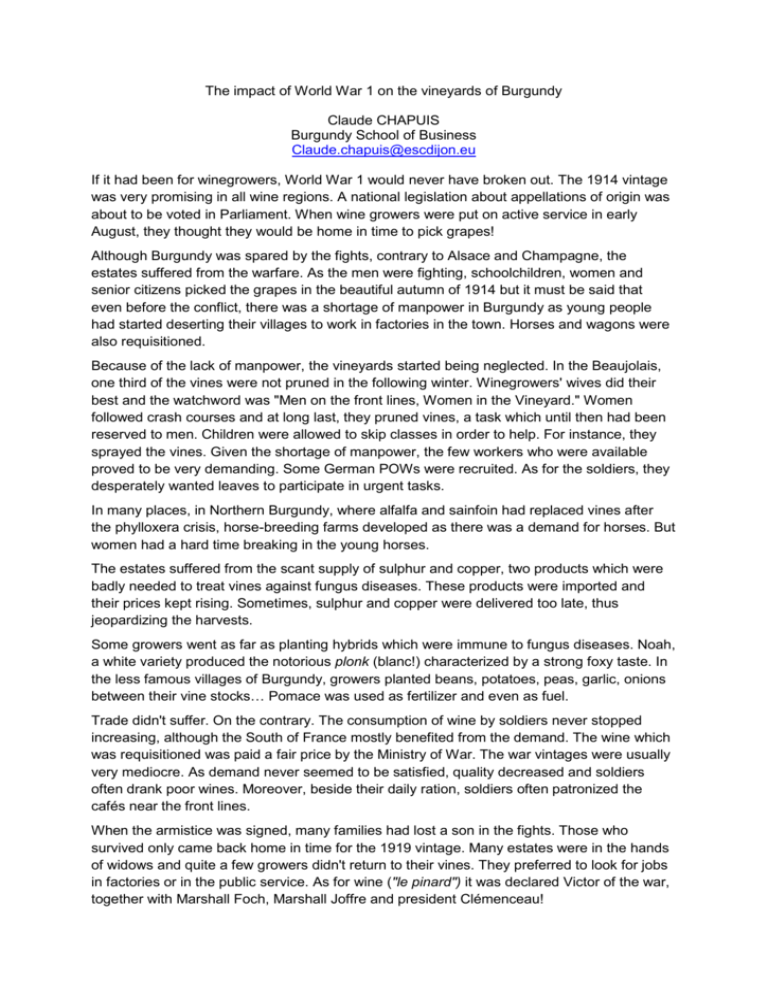
The impact of World War 1 on the vineyards of Burgundy Claude CHAPUIS Burgundy School of Business Claude.chapuis@escdijon.eu If it had been for winegrowers, World War 1 would never have broken out. The 1914 vintage was very promising in all wine regions. A national legislation about appellations of origin was about to be voted in Parliament. When wine growers were put on active service in early August, they thought they would be home in time to pick grapes! Although Burgundy was spared by the fights, contrary to Alsace and Champagne, the estates suffered from the warfare. As the men were fighting, schoolchildren, women and senior citizens picked the grapes in the beautiful autumn of 1914 but it must be said that even before the conflict, there was a shortage of manpower in Burgundy as young people had started deserting their villages to work in factories in the town. Horses and wagons were also requisitioned. Because of the lack of manpower, the vineyards started being neglected. In the Beaujolais, one third of the vines were not pruned in the following winter. Winegrowers' wives did their best and the watchword was "Men on the front lines, Women in the Vineyard." Women followed crash courses and at long last, they pruned vines, a task which until then had been reserved to men. Children were allowed to skip classes in order to help. For instance, they sprayed the vines. Given the shortage of manpower, the few workers who were available proved to be very demanding. Some German POWs were recruited. As for the soldiers, they desperately wanted leaves to participate in urgent tasks. In many places, in Northern Burgundy, where alfalfa and sainfoin had replaced vines after the phylloxera crisis, horse-breeding farms developed as there was a demand for horses. But women had a hard time breaking in the young horses. The estates suffered from the scant supply of sulphur and copper, two products which were badly needed to treat vines against fungus diseases. These products were imported and their prices kept rising. Sometimes, sulphur and copper were delivered too late, thus jeopardizing the harvests. Some growers went as far as planting hybrids which were immune to fungus diseases. Noah, a white variety produced the notorious plonk (blanc!) characterized by a strong foxy taste. In the less famous villages of Burgundy, growers planted beans, potatoes, peas, garlic, onions between their vine stocks… Pomace was used as fertilizer and even as fuel. Trade didn't suffer. On the contrary. The consumption of wine by soldiers never stopped increasing, although the South of France mostly benefited from the demand. The wine which was requisitioned was paid a fair price by the Ministry of War. The war vintages were usually very mediocre. As demand never seemed to be satisfied, quality decreased and soldiers often drank poor wines. Moreover, beside their daily ration, soldiers often patronized the cafés near the front lines. When the armistice was signed, many families had lost a son in the fights. Those who survived only came back home in time for the 1919 vintage. Many estates were in the hands of widows and quite a few growers didn't return to their vines. They preferred to look for jobs in factories or in the public service. As for wine ("le pinard") it was declared Victor of the war, together with Marshall Foch, Marshall Joffre and president Clémenceau!
